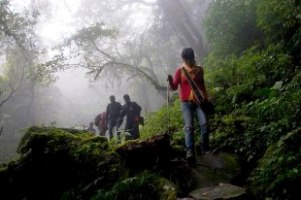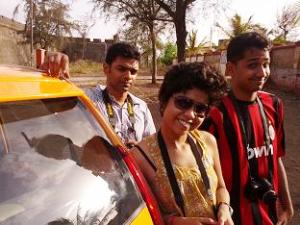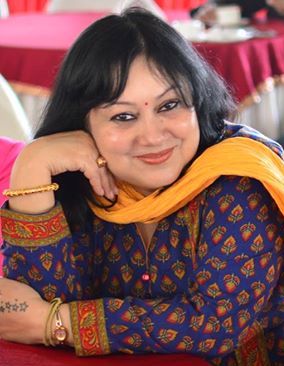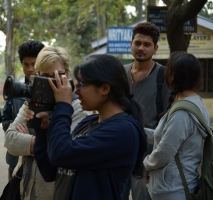The more we move towards development, progress and modernity, the less remains with us of the erstwhile ‘community’ and ‘social life’. In the words of Bogardus, “community is a social group with some degree of ‘we feeling’ and living in a ‘given area’. We might have excelled in creating a ‘virtual community’ by having thousands of friends and followers on social media such as facebook and twitter but have miserably failed to know the people staying in our neighbourhood - the ‘real community’. With the decrease in the ‘inter-dependent life’ we are witnessing the gradual demise of community not only in urban areas but also in rural areas. The quest for materialistic pleasure, success and achievement has made us immune to the happenings around us.
The respect for institutions, individuals, authority and established mores, values, customs and norms are fast receding and the changes are justified in the name of modernity, development and growth. Social change is a universal phenomena and a reality that cannot be negated, but the social control mechanisms should be equally strong to give a positive direction to the change. New ideas and new behaviour patterns are not easily accepted. There are traditional institutions both social and religious to regulate behaviour of the people and discourage them from deviating from the established values and norms. The behaviour is controlled both by positive and negative sanctions. The aim of these two types of sanctions is to encourage people to conform to norms and the traditional institutions and thriving community life ensures that the laws of the society are followed. Historically, family and community have played an active role in shaping the behaviour of an individual in society through the established social structures and systems. Community helps to lay the foundation of society and a healthy community is a pre-requisite of a healthy society.
When I talk of the important and constructive role played by the community and society in the past, I do not intend to brush aside some not so healthy practices endorsed by the community and society such as the ascribed caste status, rigorous rituals and the system of patriarchy. Despite this, society in general was more compassionate, caring and the prevalent ‘we’ feeling could be experienced. The resources were minimum but the habit to share and help was stronger. Today the resources and capabilities have increased manifold but the factors strengthening ‘limiting identities’ have also increased significantly. The existence and persistence of organized social life and stability is not possible without some minimum degree of control over its members and it is here that the importance of community is felt.
When community life is falling apart across the country, Nagaland - the land of vibrant culture and rich heritage - stands like an oasis in a desert. I happened to witness and be a part of its thriving community life during my visit to the state as the Institutional National Level Monitor (NLM) of the Ministry of Rural Development, Government of India. In the villages, I found the hierarchy missing between the top government officials and the common villagers. I saw them enjoying their meal together and having a healthy discussion on ways to develop their village. One can feel the warmth in their relationship just by observing their body language and conversation. I found the Naga village a closely-knit unit. This is something, which I have not seen in any other parts of the country that I have visited.
The respect for traditional authority still exists, as the hereditary village chiefs - Gaonburas (GBs) - continue to represent various clans in the village. They work in close co-ordination with the village council and Village Development Board (VDB) secretaries. Being a Sixth Schedule State of the Constitution, Nagaland opted for continuation of its traditional system of local self-government institution. In the state, instead of the Panchayati Raj Institutions (PRIs) for the decentralization of power and responsibility, there is a system of a village council and a VDB - corresponding to a regulating and an executive body. The village council consists of members chosen by villagers in accordance with the prevailing customary practices and usages. As per the Nagaland Village and Area Councils Act, 1978, a VDB has been constituted for each village. The VDB delivers developmental works to the village through centrally sponsored Schemes as well as State Government Schemes.
The decisions in the villages are taken through the rich tradition of dialogue and discussions, which is the hallmark of community living. The small size of the village and the existence of distinct dialects for each village fosters a strong sense of social solidarity. The social, economic and political ties further bind the villagers together. Although the villages have distinct identities, they are not isolated from neighbouring villages because of their inter-dependent relationships. Individualism does exist in the village but not at the cost of community life.
Strong community has many benefits, which is manifest in the Naga villages, as not a trace of garbage could be seen littered on the streets unlike any other villages in India. Also, the good use of toilets and presence of drainage system can be attributed to the strong community sentiment towards maintaining good hygiene and sanitation in the villages.
In the allotment of IAY houses, it has been found that there is a general practice of giving preference to the old, infirm and the newly married couples to help them settle their new home. This practice is acceptable to the villagers and is being followed with the consent of all. In today’s world where people are so self-centric that they hardly care about the problems of others, such practice strengthens our belief in community life. The assets, created under IWMP and MGNREGA, have been found to be very useful to the community. The Bharat Nirman Rajeev Gandhi Seva Kendra popularly called the ‘Village Council Halls’ have been constructed in many villages of the district. The hall has further brought the community together by providing space for greater and more transparent interactions among the villagers. For a lesson in community living, Nagaland has much to offer to the rest of the country.







































